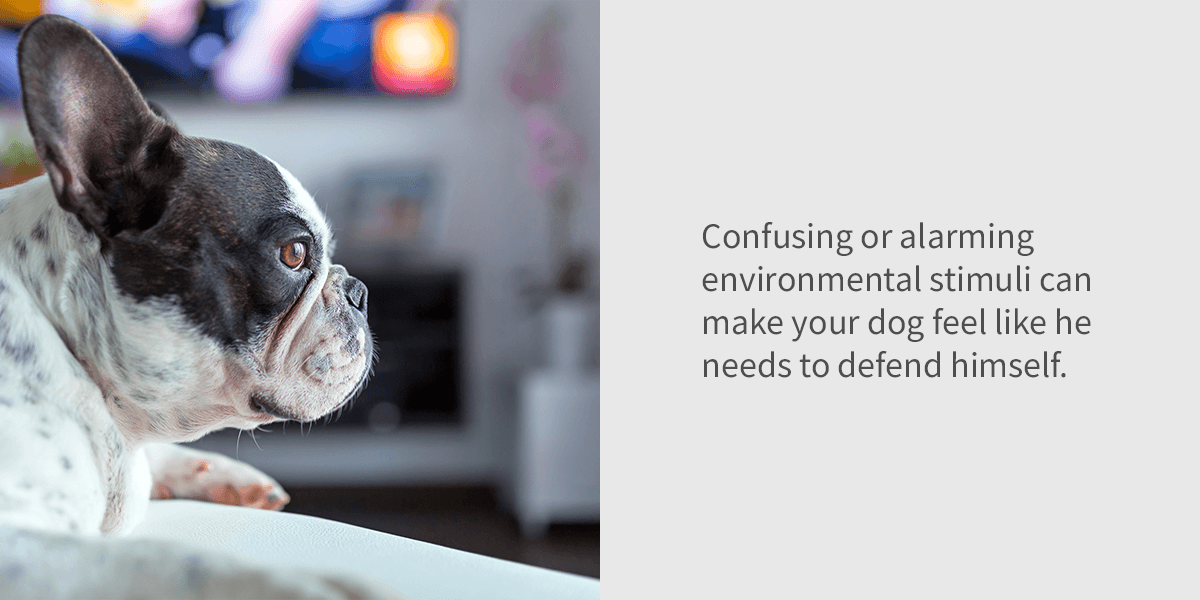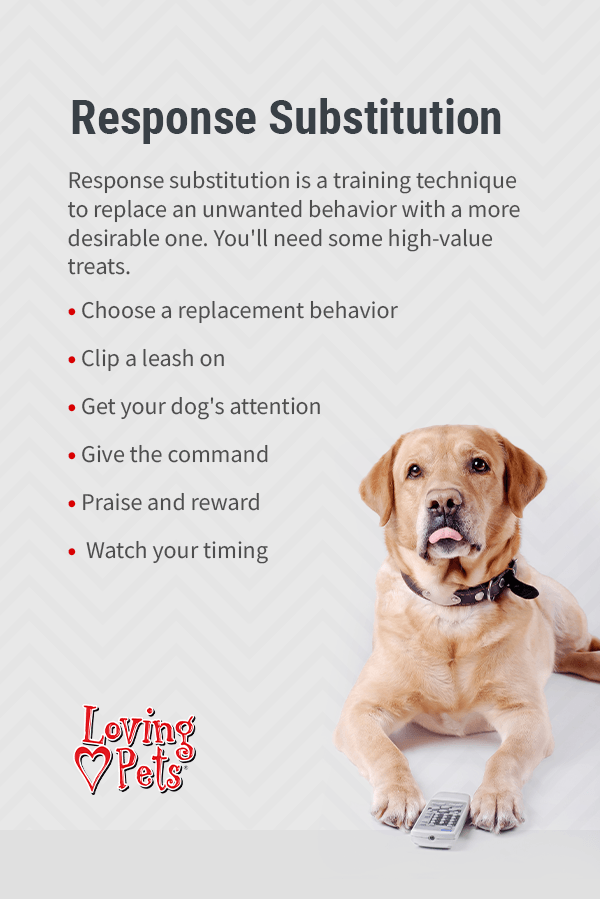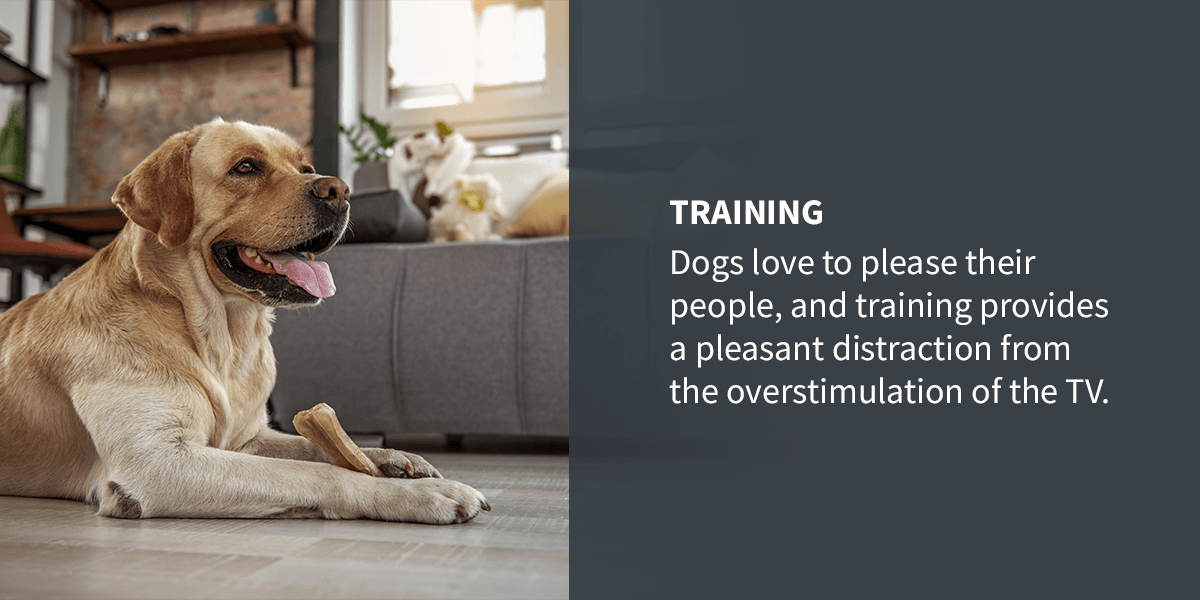How to Stop Your Dog From Lunging at the TV
Dogs have been known to lunge at the TV when they see other dogs, wild animals or even action scenes. This behavior can frustrate you and impact your quality time with your favorite series. Dogs are intelligent animals that quickly pick up on changes in their environment. Seeing familiar or jarring images on the TV may make your dog excited, anxious or reactive. Establishing the cause of the behavior is critical to eliminate it.
Dogs can perceive images on the TV similarly to human beings, and they are clever enough to recognize images from their day-to-day life, such as other dogs and excitable people. They may not, however, be able to establish that the images they see aren't real, which can lead to confusion or anxiety. The good news is, with a little fact-finding and some training, you can stop your dog from lunging at the TV and enjoy your series in peace.
Why Your Dog Is Lunging at the TV
Many dogs enjoy the TV, and there's even programming out there specifically for our four-legged friends. TV makes other dogs anxious, as they see the images differently from us. Their eyes are different from ours, so while they can see the images, they don't look the same.
Dogs have more rods in their eyes than people, making their night vision more acute and providing enhanced movement sensitivity. Due to their better motion perception, they will pick up more flickers in images that look smooth to us.
There are several different reasons why dogs may lunge at the TV, including the following:
- Excitement: The flickering images and accompanying sounds may provoke excitement in your dog, especially if they're images he recognizes. As he becomes more excited, he wants to join in and jumps at the TV.
- Confusion: The TV may confuse your dog — he can't get near the objects of his fascination and may not understand what they're doing in the living room. Confusion can lead to anxiety or activate the fight or flight response.
- Reactiveness: Confusing or alarming environmental stimuli can make your dog feel like he needs to defend himself. Lunging and barking at the TV could be his way of trying to scare the on-screen people and animals out of his environment.

Methods to Stop Your Dog From Lunging at the TV

Now you know a bit more about the why, it's time to look at how to stop your dog from jumping at the TV. Consider the following methods to help your dog break this habit:
1. Response Substitution
Response substitution is a training technique to replace an unwanted behavior with a more desirable one. The goal here is only to reward desirable responses. The challenge will be getting your dog to focus on you instead of the stimulus — the TV. You'll need some high-value treats.
- Choose a replacement behavior: Before starting, think about what behavior you would like from your dog instead of lunging at the TV. Sitting and lying down could be good options.
- Clip a leash on: You may need a leash to move your dog away from the TV so he can focus on you. Turn the TV on when you're ready.
- Get your dog's attention: As you turn the TV on, call your dog's name and show him the treats in your hand. If he lunges at the TV, ignore it.
- Give the command: Once your dog focuses on you and the treats in your hand, give him a command he is familiar with and can execute well, like sit.
- Praise and reward: As soon as your dog executes the action you asked for, reward him with a tasty treat and make a big fuss about him.
- Watch your timing: Timing is everything when you're working with dogs. Try and anticipate when your dog will lunge at the TV so that you can refocus his attention before — not during — the behavior.
2. Desensitization
The TV puts your dog in an emotionally heightened state, so the lunging should stop if you can desensitize him to the TV being on. Desensitization involves slowly exposing him to the stimulus, but at a level so low there is no undesirable response. Try this step-by-step approach:
- Feed your dog his daily meal with the TV on at a low volume in the background.
- Slowly increase the volume. If you display a reaction, you've turned the volume up too far and he is over the threshold. Turn it back down to a level he is comfortable with.
- Once your dog is comfortable with the TV at normal volume, you can move his feed bowl a little closer to the TV each time.
- Persist with desensitization, and soon you'll be able to remove his food bowl altogether. Have some high-value treats close by, and treat your dog if he starts to focus on the TV. Accompany the treat with a command he knows, like sit.
3. Training
Dogs love to please their people, and training provides a pleasant distraction from the overstimulation of the TV. Training is an excellent way to stop your dog from lunging at the TV, especially in conjunction with desensitization and response substitution. With some quality, high-value training treats, you can reinforce the desired behaviors and keep your dog focused on you. When the TV is on, training the focus commands can be extremely helpful.
Focus is an important command for your dog to learn, as it takes his attention away from the unwanted stimulus and places it on you, making it easier to give him other commands. Follow these steps to teach your dog to focus:
- Show your dog the treat in your hand. Let him smell it, so he's excited to receive it.
- Holding the treat between your thumb and forefinger, move it up so it's next to your eye. Your dog's eyes should follow the treat until he makes eye contact. When he does, tell him "focus" and give him his reward.
- Extend the time your dog makes eye contact in small intervals — three seconds, five seconds, eight seconds and so on — until he can keep his attention on you for 15 seconds or more.
- You can use a clicker to reward the behavior if you like. Click before you treat.

While using any of the above methods, continue to provide your dog with ample walks, playtime, exercise, obedience training and a quality diet. Reactive, excitable behavior becomes more common if a dog is bored, irritable or generally under-stimulated.
In addition, if your dog has generalized aggression toward dogs, cats or wildlife and her TV lunging behavior is principally an extension of what you observe when he sees live animals, contact a trainer/behaviorist to assist you in ameliorating the problem.
Treat Your Dog for Good Behavior With Loving Pets
Rewarding your dog is the best way to ensure he focuses on you and is willing to learn. Loving Pets has an extensive range of high-quality, affordable treats made in the USA with simple ingredients that your dog will love. Our dedicated attention to the ingredients in your training treats ensures your dog only gets the tastiest and best quality during training.
Please feel free to browse our extensive collection and choose the treat best suited to your dog. You can also locate a store near you, or contact us today for more information to find out more about our delicious and healthy pet treats.
© Copyright Mark Spivak and Comprehensive Pet Therapy, Inc., August 2011, All rights reserved.




